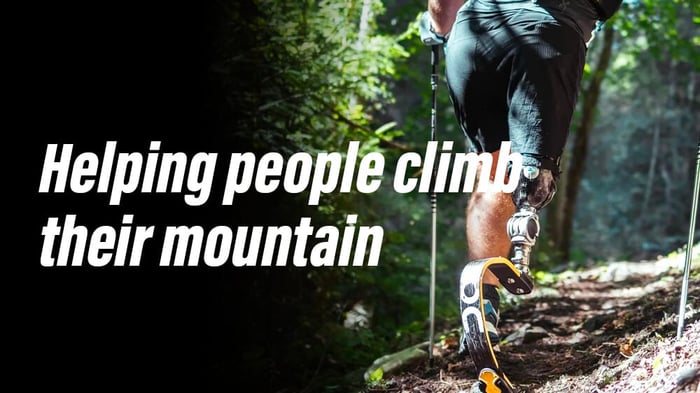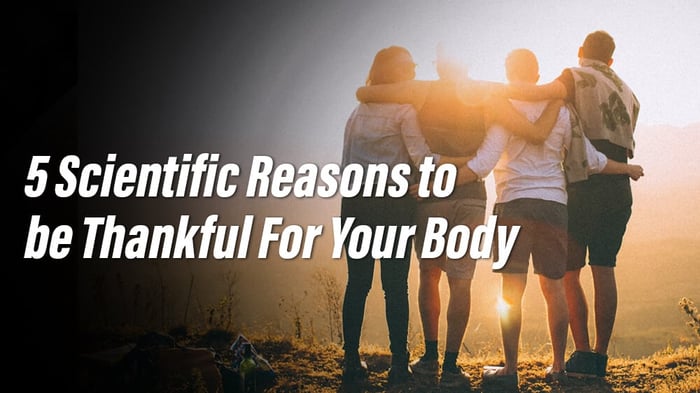In 2015, I drove through the Yosemite Valley (native lands of the Miwuk and Mono Paiute tribes) for the first time. As I watched the great granite faces of El Capitan and Half Dome come into view against the bright blue sky, I had a fleeting thought of how cool it would be to get up into those mountains and see things from a bird’s eye view.
Cool – that is – for someone else. Someone with two legs. Someone who is not disabled. Because in my mind at the time, disabled people didn’t hike up mountains. Disabled people experienced Yosemite from a car.
I was born missing my right leg above the knee, as well as several fingers on my right hand. I have used a prosthetic leg my entire life. While I was raised to believe that I could do many things – like play baseball, or wrestle for my high school team, I grew up in the 80s and 90s in a place and during an era where there weren’t a lot of disabled role models for me to look up to. Since the word “disabled” was considered taboo in my family home, to me, disabled people were disabled.
Even though I saw myself as just a kid who happened to look different, I put limits on what I thought I could do.
So, when I drove through Yosemite many years later as an adult, it didn’t cross my mind that public lands and parks – where I had seen so many people recreating outdoors for years – were also places that I could access and enjoy.
My experience is not uncommon for disabled people. It’s why I believe so strongly in the work I now do to ensure that disabled people are not just welcomed in these spaces, but that we are also able to see people like us doing things others never even dreamed possible.
My name is Zachary Friedley and I’m an advocate for other people.
In 2019, I had a transformational experience at the Born to Run Festival in Los Olivos, CA. On a whim, I went to this festival with a friend who had been running trails and ultra marathons for many years. In hindsight, I can’t really tell you why I felt like I had to be there, or what drew me to the experience in the first place – I just knew I needed to be at this event because it was important. Without any prior training, I ran a 10 mile trail race for the first time. It was, in fact, the farthest I had ever run on a trail in my life. The entire experience blew my mind and by the end of that race, I was not only hooked on running, but I wanted to do something to make sure that other people like me knew they too could experience the same feelings of freedom, elation, joy, and oneness with the outdoors. I wanted people to know that we belong on these trails, just as much as anyone else. That is how Born to Adapt began.

Disabled people are some of the least recognized athletes throughout the trail running world. This, in spite of the fact that disabled folks represent 15% of the total world population and intersect with literally every other marginalized community worldwide. Disabled people are also Black. Disabled people are also Transgender. Disabled people are also – fill in the blank. We are everywhere. And yet, in the last three years, I can count the number of times I’ve encountered another person “in the wild” as it were, on a trail, with a visible disability: That number is zero.
Why is that? I can only rely on my own experience, which essentially comes down to the realization that I just didn’t know that disabled people could be out on trails because I’d never seen anyone who looks like me doing it. It has only been through social media over the past few years that I became aware that there were in fact a handful of adaptive trail runners out there in the world. Athletes who are doing things like running 100-mile races or crushing trails in record times, all with very little to no mainstream coverage.
I figured I could do something to change that.
Two weeks ago, my nonprofit organization, Mendocino Movement Project, in collaboration with All We Do Is Run, hosted the first ever Born to Adapt event as part of the 2022 Born to Run Festival. On the same trail that I first learned that running was accessible to me, we welcomed disabled athletes of all ages onto the course for the first time. It was an absolute success. We had visually impaired athletes, amputees, folks in wheelchairs, and others show up to take on the 3-Hour Challenge. We shared laughter and tears, but also an overwhelming sense of belonging – we made space for ourselves in a place that people normally didn’t expect to see people with mobility devices, wheelchairs, or sighted-guides. It was a celebration not just for our disabled community, but also for able-bodied runners who got a chance to see what true equity and inclusion looks like in action – in the wild.
Representation matters. It is the catalyst to a million new scenarios and opportunities that didn’t exist before. And it is key to ensuring that all people, of all abilities, know that they belong in this space.
There is still so much work to do.
In August 2022, I will be running the UTMB MCC 40k race in Chamonix, France. But before you get all fired up about how exciting this is (and believe me, it is very exciting), it’s important to note I am not the first blade runner to attempt this course. Adam Popp – another above-the-knee trail blader – ran the 100k course at UTMB last summer. No one knows about Adam’s historic and groundbreaking run last year. And that’s my point.
As of today, none of the major trail running race series around the world have Adaptive divisions or podium opportunities. This is not to say that there are no races with adaptive divisions. For example, the Vermont 100, led by Race Director Amy Rusiecki, created an Adaptive Division as part of the larger 100 mile race. This should be the norm, but it is not. What I mean is that on a larger systemic level, as a professional trail runner, disabled people like me lack the opportunity to “win” races like UTMB, Spartan Trail, Western States, and others because there are no divisions specific to adaptive runners. As a guy with one leg, I can tell you that I am not coming after Jim Walmsley’s record!
I would like the opportunity to race against people with similar levels of ability – in the same way that able-bodied elite runners do every time they enter a major race. There is almost an unbridled opportunity to shift the infrastructure of these races to welcome a whole new generation of trail runners to the sport, by acknowledging and making space for our differences, and giving us the same opportunity as people running on two legs.

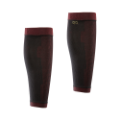
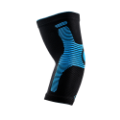
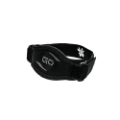

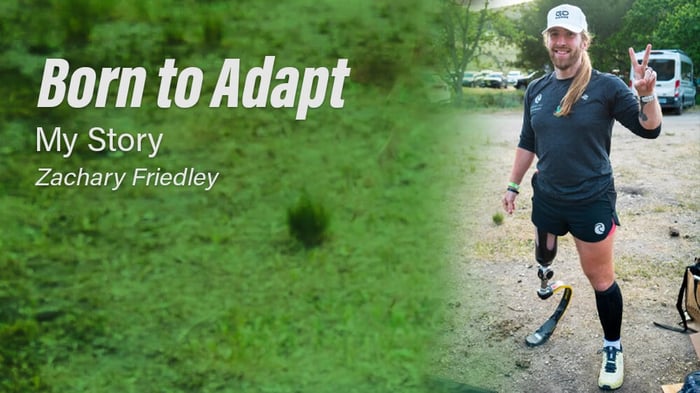
.jpg)
